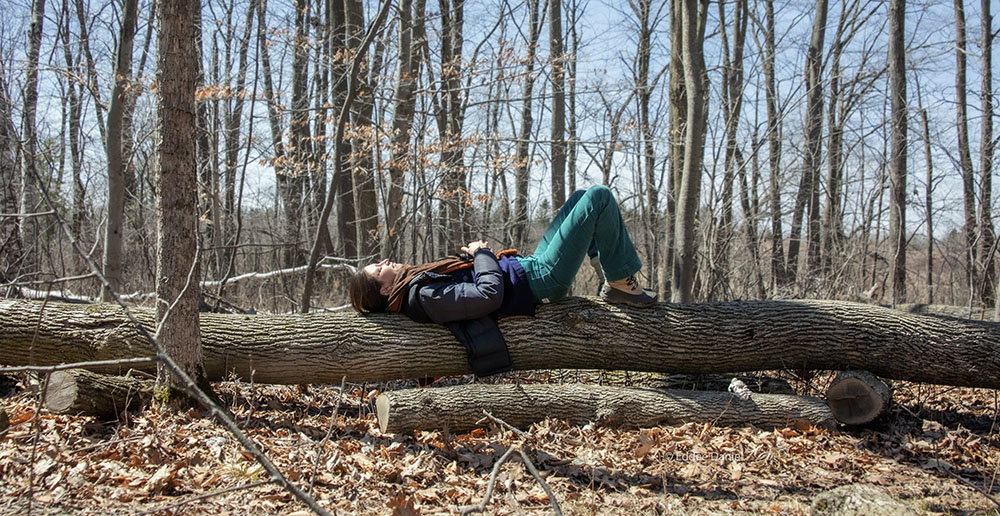
Sophie Hughes: Artist in Residence at Forest Beach Migratory Preserve
June 18, 2025 | Topics: featured artist
The Natural Realm presents Sophie Hughes, who is among 10 artists participating in a year-long residency program called ARTservancy, now in its sixth year. ARTservancy is a collaboration between Gallery 224 in Port Washington and the Restoring Lands Land Trust, (formerly Ozaukee Washington Land Trust and River Revitalization Foundation). Milwaukee Area Land Conservancy, Tall Pines Conservancy, and Lake Michigan Bird Observatory. The mission of ARTservancy is to promote the visionary work of both the artists and conservationists. Each artist has selected a preserve to spend time in and to engage with.
Reflections from the Artist
Lake Michigan is a site of deep fascination for me as an artist. This body of water is laced with complex human and other-than-human stories that are simultaneously personal and universal. Personal because, eight generations ago my ancestors migrated from Europe to this lakeshore and began an entanglement with the landscape. Universal because, the human and other-than-human story of Lake Michigan is a familiar tale of encounter, extraction and the resulting broken relationships that have led to global catastrophic biodiversity loss.
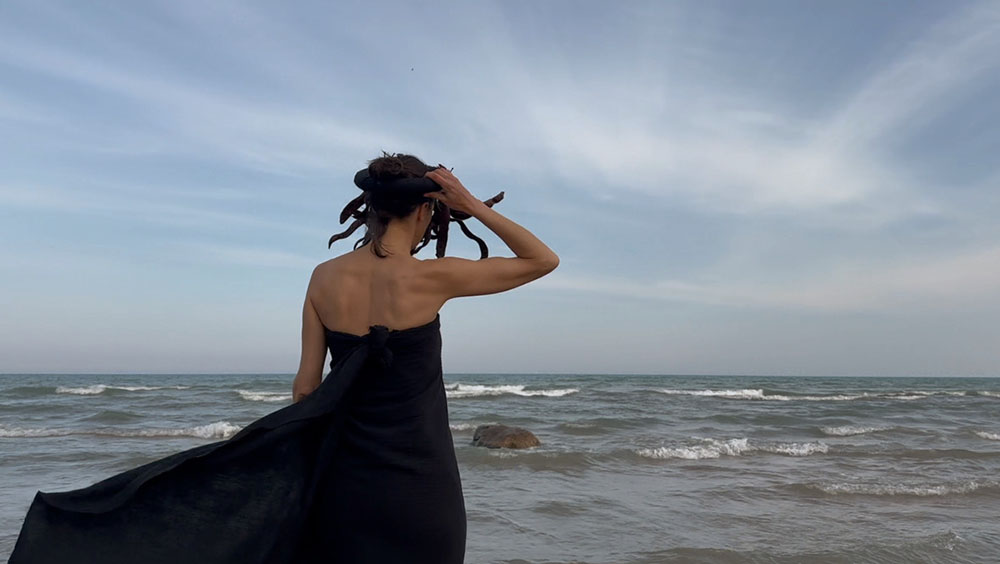
The way we see things is the way we treat them and the stories we tell ourselves become the realities that we live each day. In my work I explore the way in which relationships with the other-than-human are formed through story. For example, if Lake Michigan were seen as a deity, it would be worshiped. Conversely if the lake is seen as a resource, it will be extracted from. Through my work I explore how art and storytelling can offer ways to re-think our relationships with all that grows and flows around us.
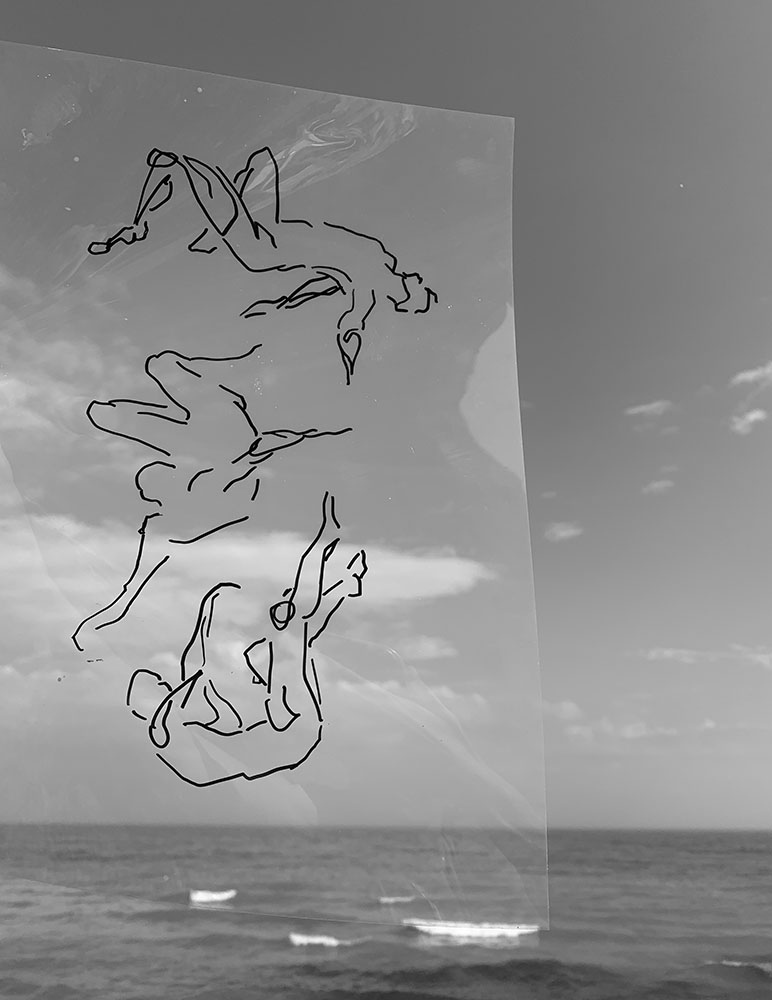
During the 2025 ARTservancy residency I am working alongside Lake Michigan Bird Observatory. This placement provides a unique opportunity to learn from experienced conservationists about the ecology of Lake Michigan, to understand better the rhythms and behaviours of its migratory beings and collaborate in the work of connecting communities with their local ecology.

Through photography and film, I explore interrelated themes of migration, settlement, displacement and what it means to be native and non-native for humans and non-humans alike. Over the years I have observed and documented the arrival and departure of migratory birds and insects. Whilst lenses and binoculars are often seen as tools of surveillance, for me they offer a way of getting close to the other-than-human without disturbing their worlds. This practice often finds me up to my waist in the bitterly cold waters of Lake Michigan, camera and binoculars around my neck shooting black and white film of ducks and geese heading to their northern breeding grounds.
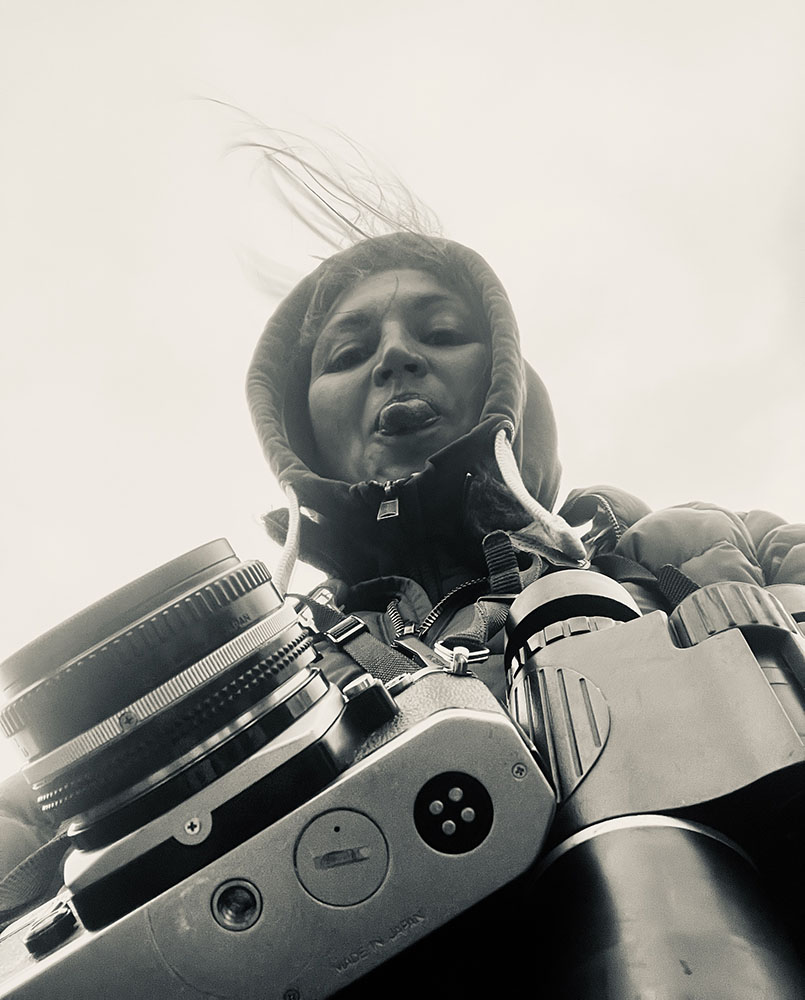
Responding to these themes of loss and regeneration, I created a work called ‘When They Came Back, They Were Gone’. It is about ecological loss caused by extractive relationships with ecosystems of the Great Lakes. The work tells the story of trumpeter swans who were hunted to the brink of extinction by the late 1800’s (conservation efforts have succeeded in reintroducing a healthy population of trumpeter swans) and monarch butterflies who, today are facing their own extirpation from the landscape through habitat loss and pesticide poisoning.
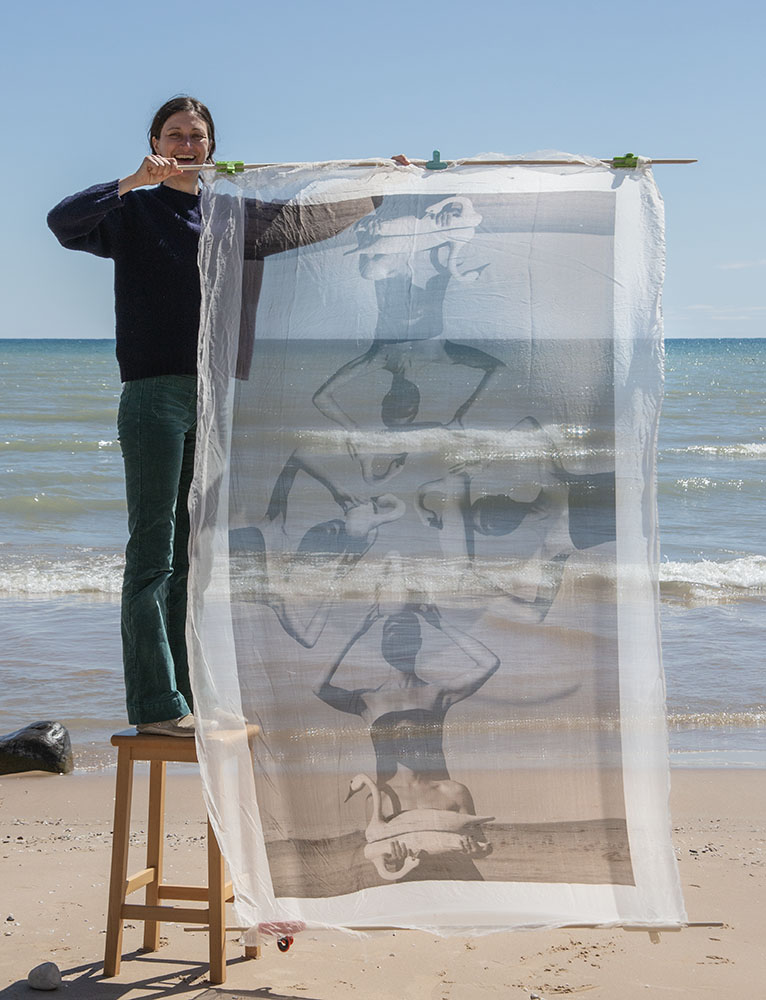
Exhibited as an installation at Goldsmiths University, London; the walls were painted with a flock of migrating trumpeter swans in mid-flight. As you move from left to right, one by one, they are shot out of the sky and fall to the earth. From their dead bodies rise their souls, which transform into monarch butterflies who continue the migratory journey (following a belief that the butterflies are soul carriers). In the centre of the room are silk hangings with images of a woman holding a pair of wooden swans who were carved by my grandfather and painted by my grandmother. The swans were made in the tradition of hunting decoys, but neither my grandmother or grandfather hunted. Instead, the carvings show a form of deep attentiveness to the form and character of the local ecology, in its own way, a form of worship.
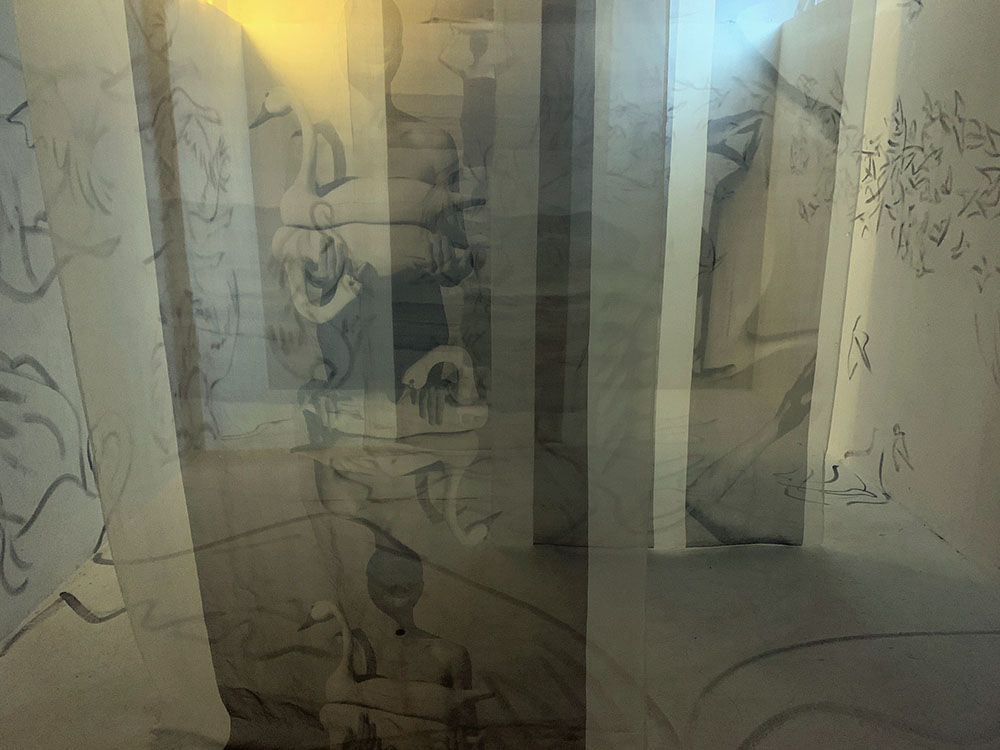
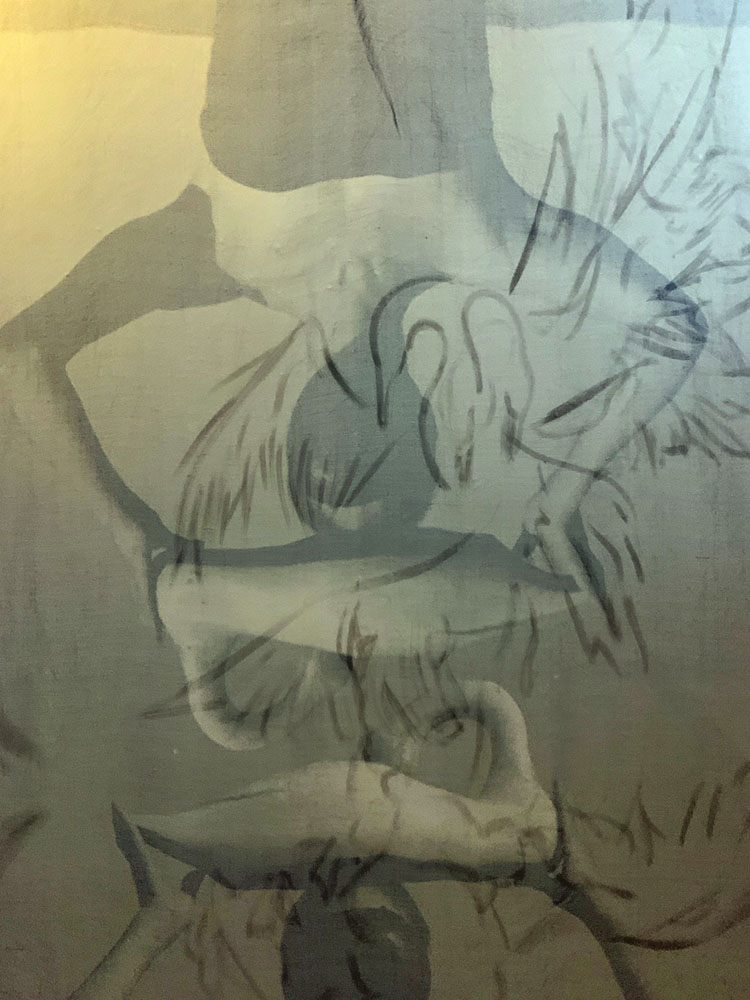
Honouring Loss
During Spring migration last year, I cycled to the darkroom at Studio 224 every day. When you cycle, you go slowly and can feel and see the world around you. As I crossed the highway each day and passed alongside farmland, I noticed dead butterflies, bees and other insects, and occasionally a bird lying on the side of the road. When we drive cars, we are insulated from the world, contained and oblivious to the outside. Unable to pass by the dead bodies, I carefully gathered the small insects up and took them to the darkroom. Using my own experimental analogue photography techniques and new techniques that I had learned from local artists Vicki Reed and Hal Rammel, I produced a series of works exploring ecological loss. I exhibited these works in Hanoi and London in 2024. Here is the text from the exhibition:
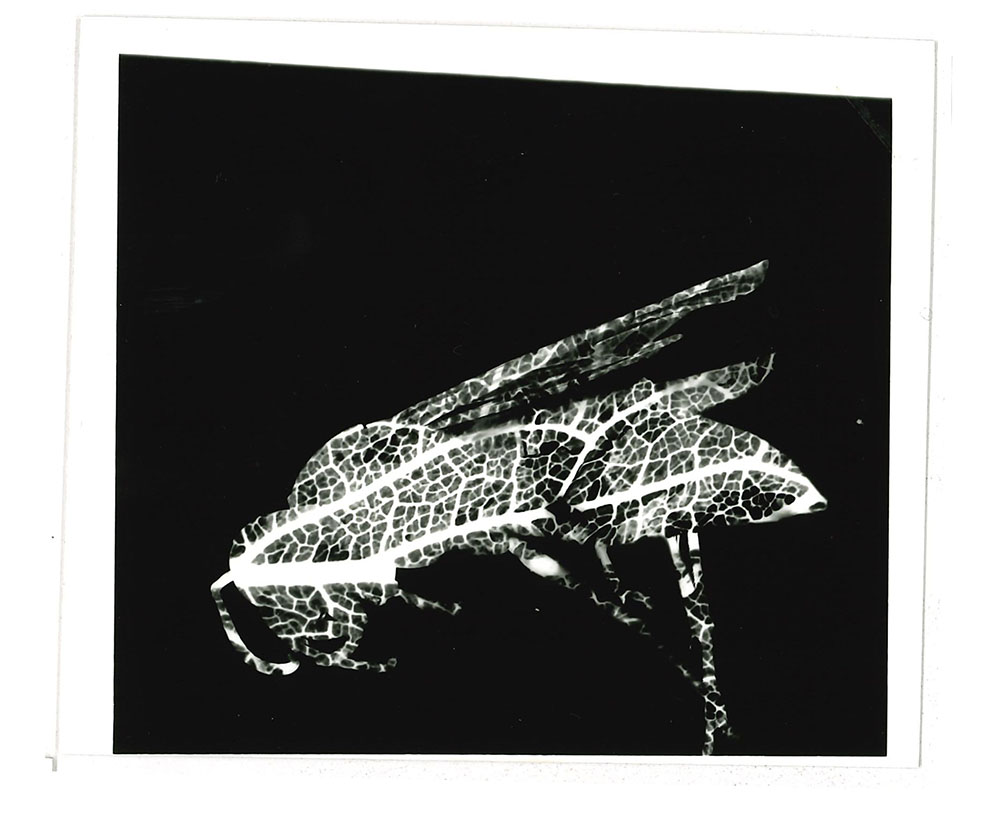
JOURNEYS INTERRUPTED: a darkroom vigil by Sophie Hughes
The migratory other-than-human world moves in rhythm with the seasons. The seasons are tuned to the tilt of the earth as it turns again to face the sun. Flying, fluttering, catching currents; they follow paths that form ecological webs around planet earth. Roads, flight paths and agro-industrial landscapes criss-cross these webs, without acknowledgement. Journeys are disrupted and the sustenance needed to continue is destroyed. Insect bodies, feathers of deceased birds and seeds crushed into asphalt is what remains.
How can we honour broken webs and journeys interrupted? How can we keep vigil for ecological grief?
The remains were collected from the roadside. With the use of light their images were exposed and layered to create these works. Afterwards, everything was returned to the land. From the micro to the macro to the cosmic. Leaves form veins, veins form rivers, rivers flow back to the ocean, the ocean is where it all began.
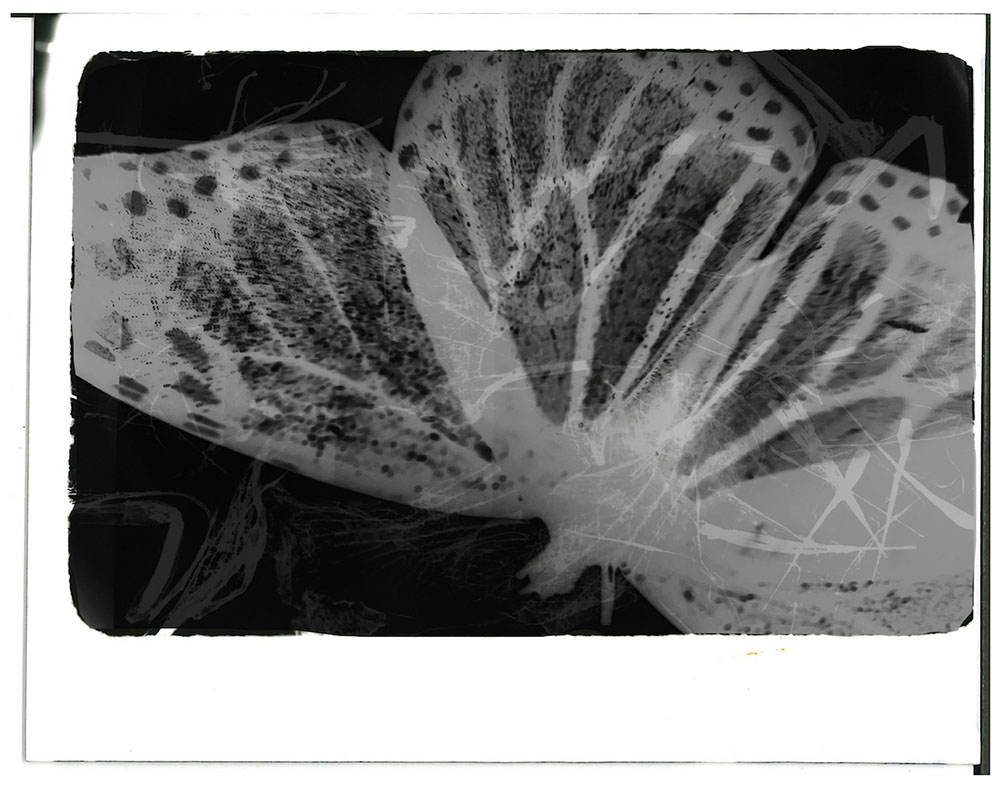
Invasive, Non-native Trash
During my residency I have begun to be interested in the way we categorize living beings into belonging and not belonging, native, non-native and invasive. The shore of Lake Michigan is covered in large piles of small grey shells belonging to zebra and quagga mussels. Brought in as ballast by ships traveling from Eastern Europe through the St. Lawrence Seaway and the Welland Canal, the quagga and zebra mussel populations have dramatically altered the lakes ecology by reducing phytoplankton, changing nutrient cycles and altering the food webs. Their abundance is evident in the piles of shells on the shore. These molluscs are considered to be ‘invasive,’ although one could argue that ‘kidnapped’ better describes the way in which they came to be in the Great Lakes.
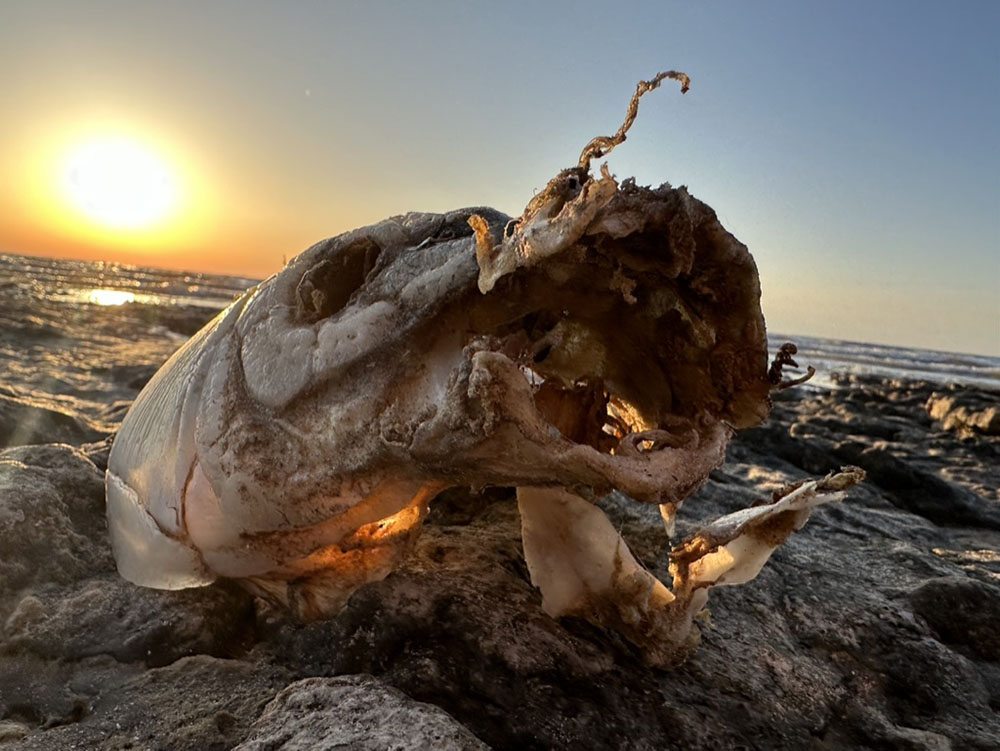
Laid out, the shape of the shells reminds me of butterflies, leading me to think about the migratory monarchs, whose remarkable 3000-mile journey from Mexico to the United States and Canada passes along the shore of Lake Michigan, pausing to feed and lay the next generation of eggs on the milkweed. Only a few years ago their orange and black forms filled the air with dancing wing beats. Now only a few brave travellers pass by each day. I made a pair of eye glasses covered in shells that render the person wearing them incapable of sight prompting the question; How can we be surrounded by so much loss yet cannot see it?
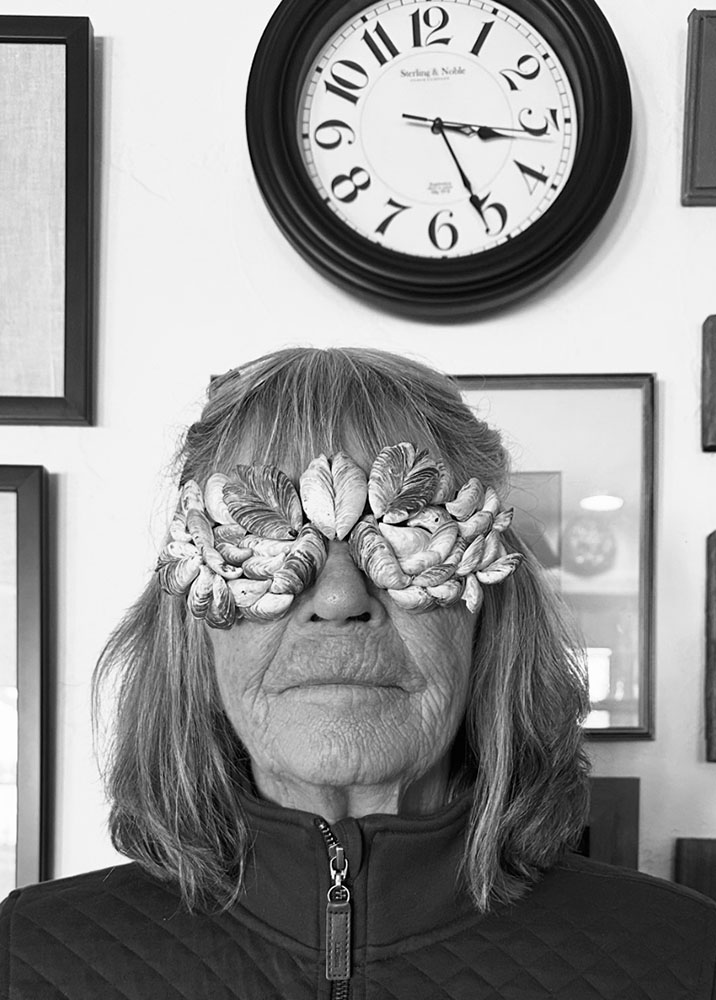
One of my mother’s neighbours picks up rubbish from the beach. They often find deflated mylar balloons made of disposable non-biodegradable plastic, released as tokens of love, everlasting love that endures for hundreds of years, slipping into our systems as microplastics, touching all that it encounters on its journey. I created a dress from the rubbish and went to dance with the lake.

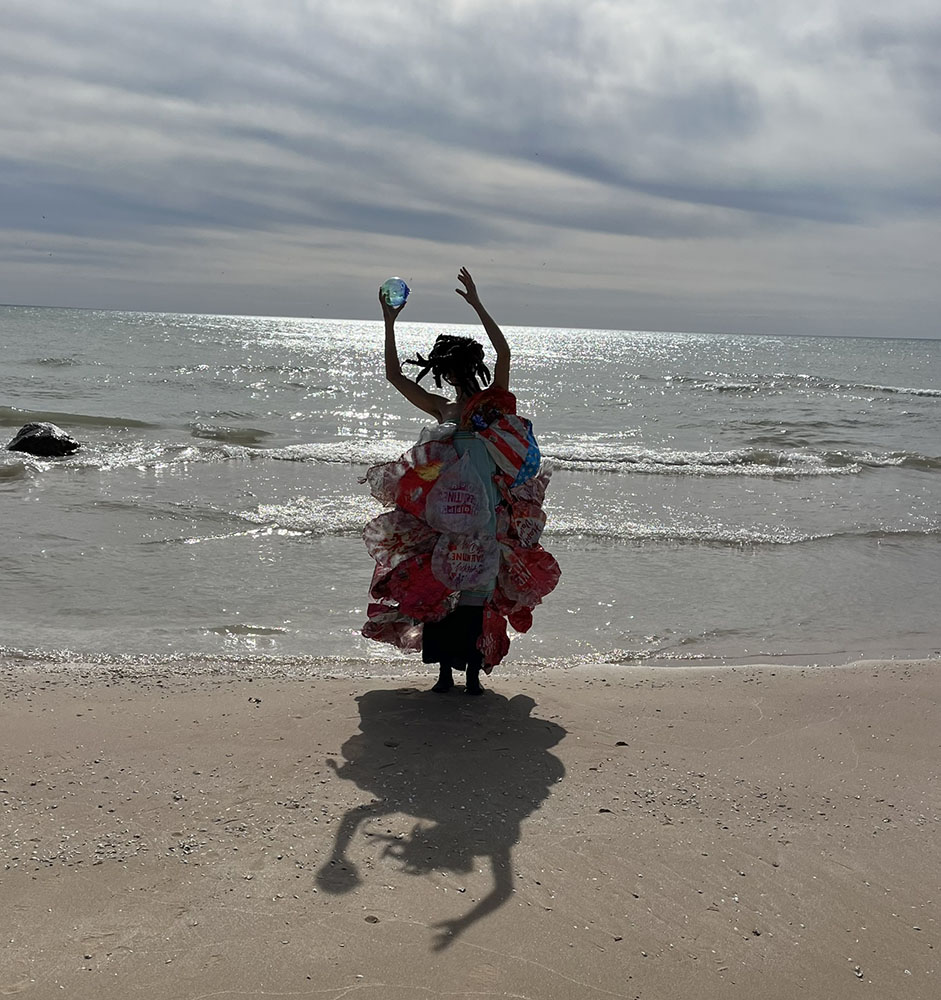
In July I will return to Lake Michigan and will shadow the team at Lake Michigan Bird Observatory. July is a busy time with birds such as purple martins, wrens and cliff swallows raising their young. LMBO runs a community programme monitoring Wren nests that have been placed in gardens along the lakeshore. Projects such as this create a web of attention, noticing and care, linking together members of community in a mutual cause.
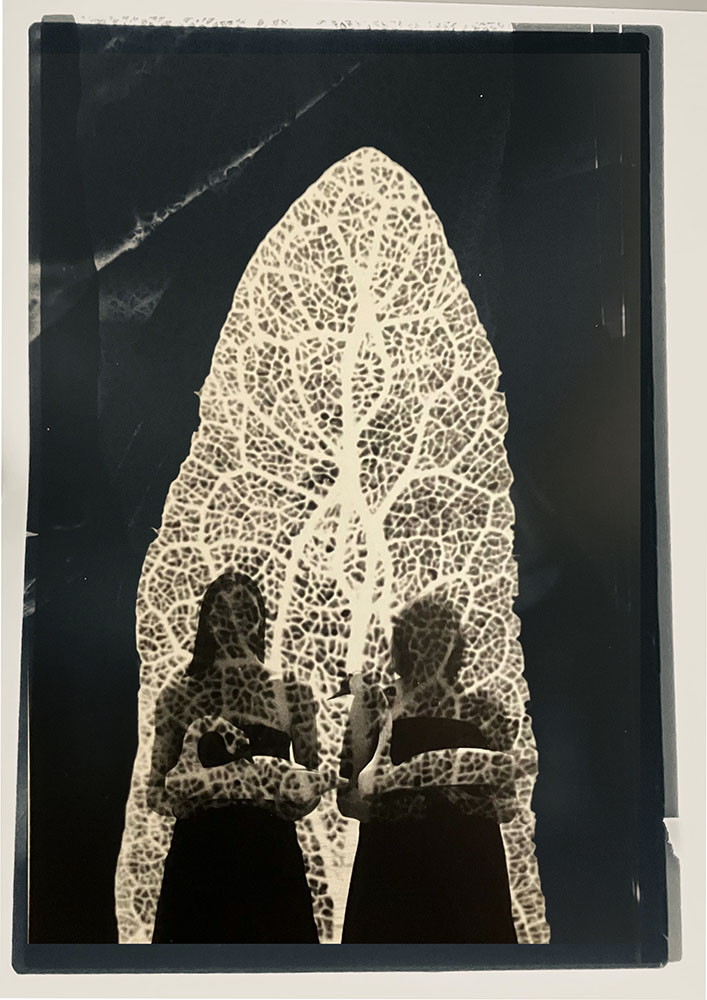
Community engagement will be central to my residency. I will deliver a small series of workshops in collaboration with LMBO later this year. These workshops will offer a space for participants to form deeper attentive connections with all that grows and flows around them. Using art as an imaginative tool, we will re-imagine our relationships with the other-than-human and write new stories.
Gallery

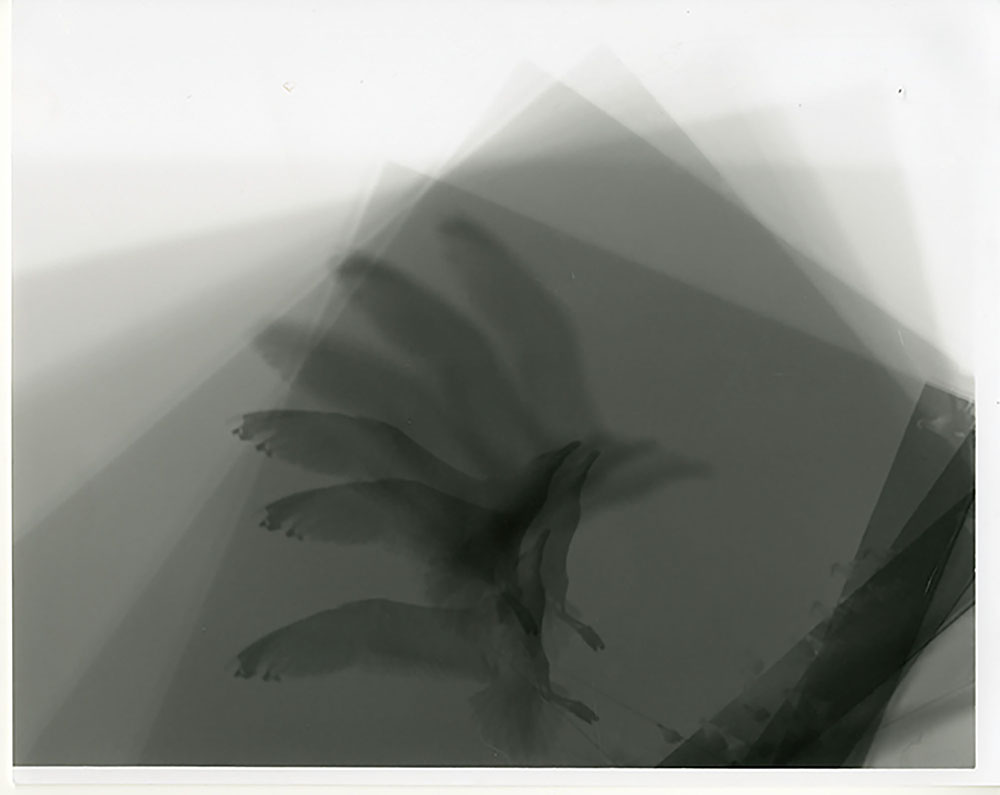
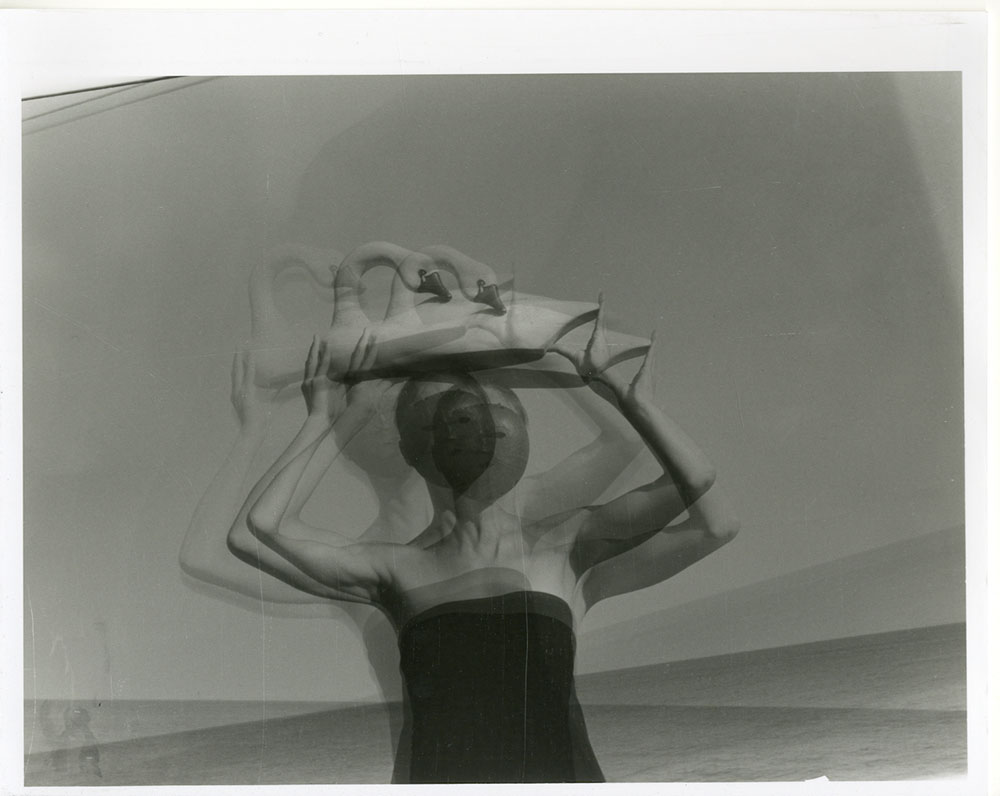
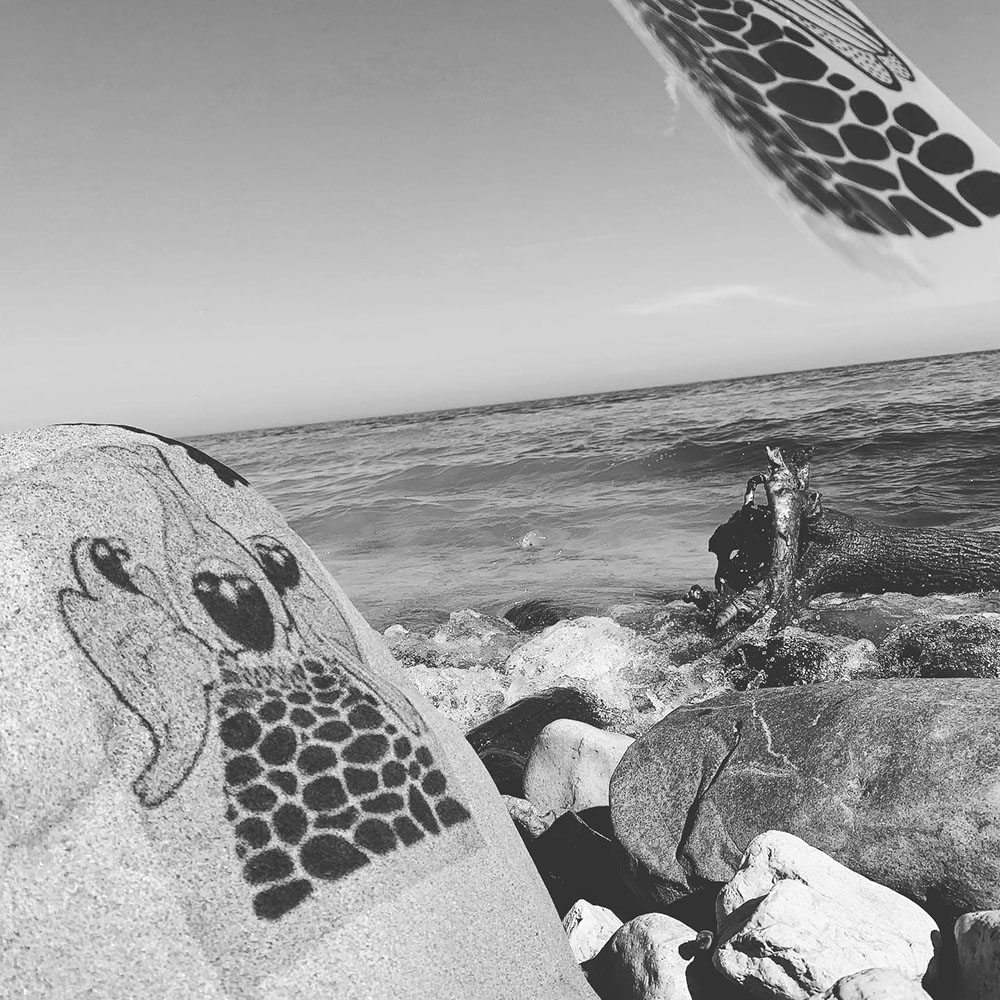
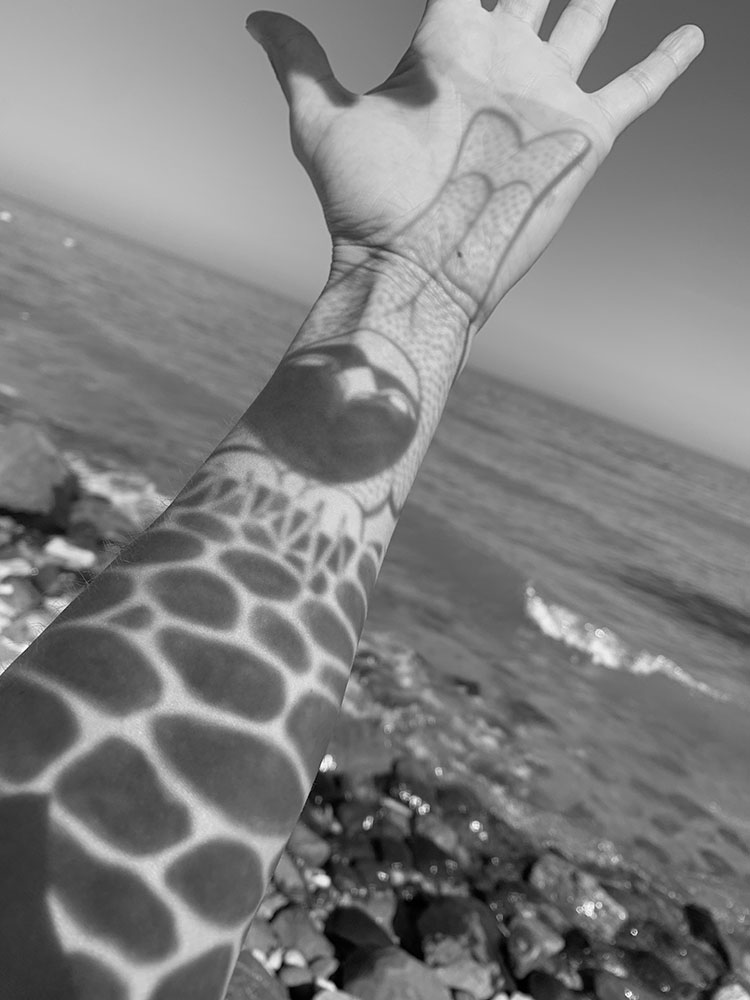

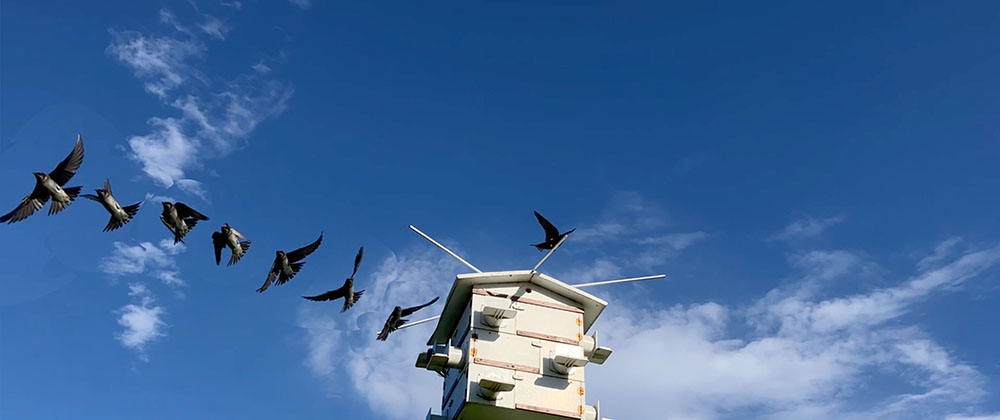
Bio
Sophie is an artist, researcher and educator. Her work roams the boundaries between the known and the unknowable. Looking through spiritual, ecological and scientific lenses, she focuses on relationships between the human and the other-than-human world. Her work harnesses the power and sensitivity of art to explore questions such as: if the forest is our teacher, what can we learn?
Her personal practice includes storytelling, poetry, movement, photography and film. In community, her practice takes the form of gatherings and workshops, where art provides an exploratory vehicle for addressing the most pressing ecological questions of our time.
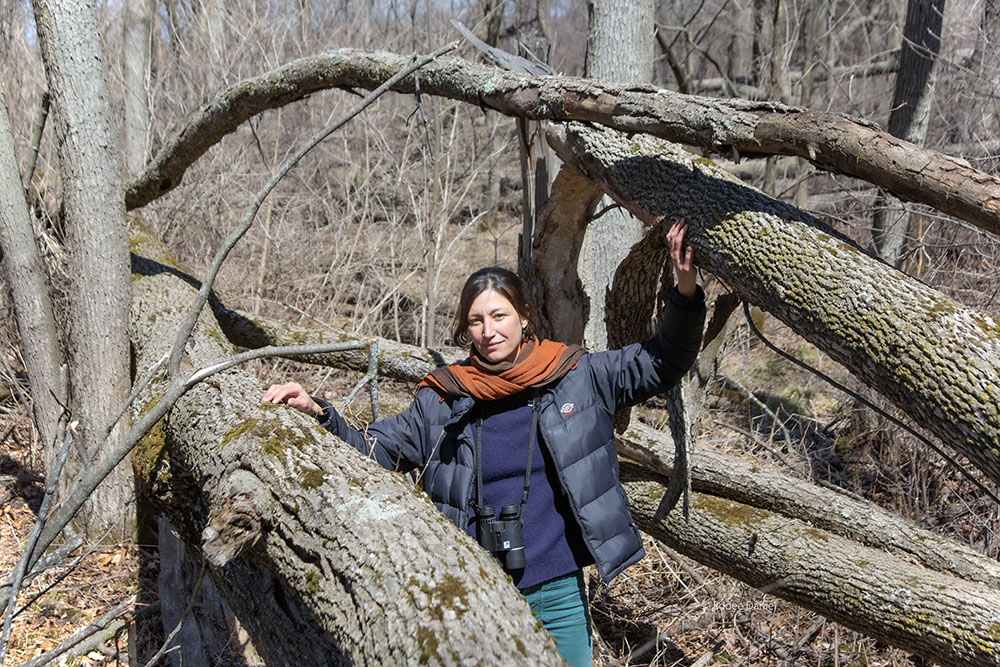
Sophie completed her Masters in Art and Ecology at Goldsmiths, University of London in 2022. She runs a community organisation called Walking Trees Collective who have collaborated with the Horniman Museum, Essex Wildlife Trust, Estuary Festival, Goldsmiths Art Research Garden, Wayi Wayi Arts Centre and many more.
Sophie has exhibited her work in London at Somers Gallery, Lumen and House of Annetta. She has also had exhibitions in Hanoi, USA and Lisbon and screened her films for Culture Declares. Her artworks and poetry have been published in Ambient Receiver and Smiths Magazine.
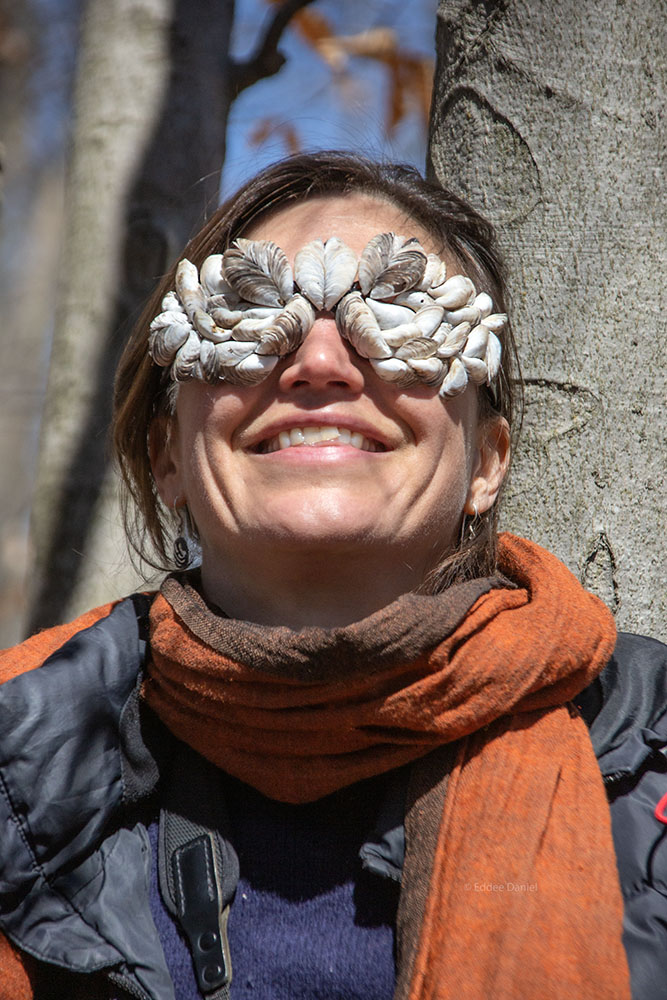
For more information about Forest Beach Migratory Preserve go to our Find-a-Park page. This residency is sponsored by Lake Michigan Bird Observatory.
Related stories:
Vicki Reed: Artist in Residence at Forest Beach Migratory Preserve
Karen and Patrick Robison: Artists in Residence at Forest Beach Migratory Preserve
Kelly Alexander: Artist in Residence at Forest Beach Migratory Preserve
Nicole Shaver: Artist in Residence at Forest Beach Migratory Preserve
Ellen Anderson: Artist in Residence at Forest Beach Migratory Preserve
D’Lacey Eichinger: Artist in Residence at Forest Beach Migratory Preserve
Ally Wilber: Artist in Residence at Forest Beach Migratory Preserve
This is the latest in our series of featured artists, which is intended to showcase the work of photographers, artists, writers and other creative individuals in our community whose subjects or themes relate in some broad sense to nature, urban nature, people in nature, etc. To see a list of previously featured artists, click here. The work of the 2022-2023 ARTservancy artists in residence is currently being exhibited monthly at Gallery 224. To meet the other ARTservancy artists in residence, click here and then use the drop-down menu.
All images courtesy of the artist, except as noted. The featured photo at the top of Sophie Hughes at Forest Beach Migratory Preserve is by Eddee Daniel. Lake Michigan Bird Observatory is a project partner of A Wealth of Nature.
4 thoughts on "Sophie Hughes: Artist in Residence at Forest Beach Migratory Preserve"
Comments are closed.


beautiful work by Sophie and beautiful story, Eddee!
Wonderful art!
Appreciate the time you put in. Good read.
Poignant, poetic and thought provoking. The words and images meld so beautifully and are helping me see familiar things in unfamiliar ways. Thank you, Sophie and Eddee!